
Rollins College is a private college in Winter Park, Florida. It was founded in November 1885 and has about 30 undergraduate majors and several master's programs. It is Florida's fourth oldest post-secondary institution.
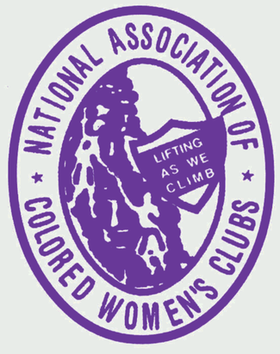
The National Association of Colored Women's Clubs (NACWC) is an American organization that was formed in July 1896 at the First Annual Convention of the National Federation of Afro-American Women in Washington, D.C., United States, by a merger of the National Federation of Afro-American Women, the Woman's Era Club of Boston, and the Colored Women's League of Washington, DC, at the call of Josephine St. Pierre Ruffin. From 1896 to 1904 it was known as the National Association of Colored Women (NACW). It adopted the motto "Lifting as we climb", to demonstrate to "an ignorant and suspicious world that our aims and interests are identical with those of all good aspiring women." When incorporated in 1904, NACW became known as the National Association of Colored Women's Clubs (NACWC).

Ruth Baird Leavitt Owen Rohde, also known as Ruth Bryan Owen, was an American politician and diplomat who represented Florida's 4th congressional district in the United States House of Representatives from 1929 to 1933 and served as United States Envoy to Denmark from 1933 to 1936. She was the first woman elected to Congress from Florida and just the second woman ever elected to the House from the American South, after Alice Mary Robertson of Oklahoma. Owen became the first woman to earn a seat on the House Committee on Foreign Affairs. A member of the Democratic Party, she was the first woman chief of mission at the minister rank in U.S. diplomatic history under President Franklin D. Roosevelt.

The Woman's Club of Palmetto is a women's club and is also the name of its historic building in Palmetto, Florida. It is located at 910 Sixth Street West. The building was added to the National Register of Historic Places in March 1986.
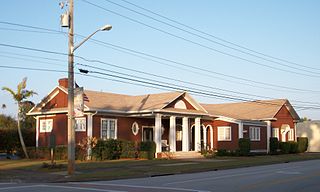
The Vero Beach Woman's Club is a historic woman's club in Vero Beach, Florida. It is located at 1534 21st Street. On February 10, 1995, it was added to the U.S. National Register of Historic Places.

The George McA. Miller House is a historic home in Ruskin, Florida. It is located at 508 Tamiami Trail. It was built in early 1900s as the residence of George McAnelly Miller, president of Ruskin College and his wife Addie Dickman Miller, the college's vice-president. It currently houses the Ruskin Woman's Club.

The Lemon Bay Woman's Club is a historic woman's club in Englewood, Florida, United States. It is located at 51 North Maple Street. On August 11, 1988, it was added to the U.S. National Register of Historic Places.
The Lemon Bay Woman's club was organized by Dr. Mary Green who was a school teacher in Englewood. Originally named the Lemon Bay Mother's Club, a name retained until April 1924, the club played an important role in the development of the religious, educational, civic and political life of Englewood. Construction on the prairie style clubhouse was begun in September 1925 on two lots donated in Lampp subdivision by A. Stanley and Winifred E. Lampp. Englewood, incorporated in 1925, and the surrounding area then boasted 300 residents.
Sarasota architects Thomas Reed Martin and Clare C, Hosmer, formerly of Chicago, donated their design services for the building. Carpenters Pat Lampp, Fred Clark, and Leroy Bastedo were responsible for the clubhouse construction. The building originally consisted of a screened veranda and one large meeting room featuring a brick fireplace and a semi-circular stage, for which total construction cost was 3,120. A housewarming held on February 19, 1926, attracted 200 persons. Official incorporation, a year later, occurred under the direction of Charlotte Wellington, president.
In 1922, under the leadership of Mrs. Hallie Green, members started a school library and maintained a lending library at the club until 1962. Surviving the depression and the loss of its $37 treasury when banks failed, the club continued to hold fish fries, nature study classes, dances, card parties, plays, musical programs, travelogues and lectures. The club retired its mortgage on February 24, 1938. The note was burned at a gala meeting on March 4, 1938
Between 1926 and 1970, the club served as a sanctuary for many Englewood churches and as a meeting place for various organizations. The Englewood Community Church was the first congregation to meet at the club. Others included the Community Presbyterian Church, First Baptist Church, St. Raphael's Catholic Church, St. David's Episcopal Church, Evangelical Free Church, Church of God, Church of Christ, First Methodist Church, and Calvary Baptist Church. During World War II the building was turned over to the American Red Cross. The club was the first building in Englewood to be listed in the National Register of Historic Places.

The Woman's Club of Winter Haven is a historic woman's club in Winter Haven, Florida. It is located at 660 Pope Avenue, Northwest. On August 10, 1998, it was added to the U.S. National Register of Historic Places. Since 2006, it has served as the headquarters of the Museum of Winter Haven History.
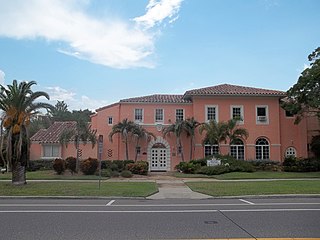
The St. Petersburg Woman's Club is a historic woman's club in St. Petersburg, Florida. It is located at 40 Snell Isle Boulevard. On July 15, 1994, it was added to the U.S. National Register of Historic Places.

The Sarasota Woman's Club is a historic woman's club in Sarasota, Florida. It is located at 1241 North Palm Avenue. It was founded in 1913 and on January 18, 1985, it was added to the U.S. National Register of Historic Places. The clubhouse is now home to the Keating Theater, the mainstage of Florida Studio Theatre.

The Miami Women's Club is a historic site in Miami, Florida. It is located at 1737 North Bayshore Drive. On December 27, 1974, it was added to the U.S. National Register of Historic Places.
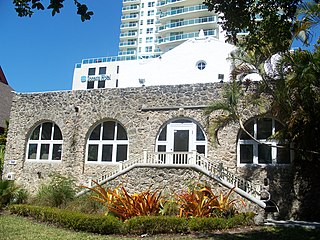
The Woman's Club of Coconut Grove is a historic woman's club in Miami, Florida.

Julian Kennedy was an American engineer and inventor, known for his national and international contributions to the steel industry. He was awarded the ASME Medal in 1928.

The Iowa Federation of Colored Women's Clubs (IFCWC) was an umbrella organization serving African-American women's clubs in Iowa. The motto of IFCWC was "Sowing Seeds of Kindness", and the organization was affiliated with the National Association of Colored Women. The club produced a journal called the Iowa Colored Woman. IFCWC sent delegates to represent the state at national conventions and opportunities such as "Colored Women's day" at the 1939 New York World's Fair. The IFCWC is also known for creating a black women's dormitory for the University of Iowa before the school was fully integrated. The building has been listed on the National Register of Historic Places.

The Glendale Woman's Club was first organized in 1901 as a “Self Culture Club”, the primary aim of the Woman’s Club was self-improvement from a literary standpoint. They raised money for the first library and city parks. In 1898 the lumber company moved to a new two-story office building; Mr. Messenger could no longer manage the library. A library association was formed. The women’s club bought up stock and then assigned members to vote. Mrs. May Catlin Hanson, through club member Mrs. Lafe Myers, donated a building which was placed in park to house the library until a new one could be built. Mrs. Robert Clark and Mrs. J.M. (Mary) Pearson took the lead. Mary took a class on “Library work” in Phoenix to be able to “start it out right.”. By 1907, membership had increased to fifty members and it became impossible to continue meeting in homes, so the group began to think of acquiring its own clubhouse. On February 21, 1912, exactly 1 week after Arizona became the 48th state, the Club was recognized 501c3 non profit corporation with 85 members. The Glendale Woman's Club is a member of the General Federation of Women's Clubs.

The Woman's Club of Olympia was founded in Olympia, Washington, United States, in 1883. It is one of the oldest woman's club on the West Coast. Founding members included Mehitable Elder, Pamela Case Hale, Mary Hartsock, Janet Moore, Phebe Moore, Mary Shelton, Ella Stork, Abbie Howard Hunt Stuart, and Sarah E. Whitney. Its first president, Mrs. A.H.H. Stewart, a college graduate and a veteran of the Women's Club in Boston, was a "driving force" in the club's organization and was known as the "Mother of Women's Clubs" for having founded other clubs, too.

The Woman's Improvement Club Clubhouse in Corona, California, at 1101 S. Main St., was built in 1913. It was listed on the National Register of Historic Places in 1988.
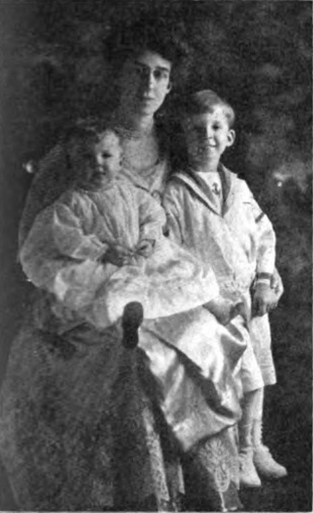
Lucy Kennedy Miller (1880–1962), also known as Mrs. John O. Miller, was a prominent 20th-century American suffragist who became the president of the Equal Franchise Federation of Pittsburgh, Pennsylvania and the first president of the Pennsylvania League of Women Voters (PLWV). In 1919, the League of Women Citizens of Pennsylvania called her "the woman to whom, more than to any other" was "owe[d] the triumph of" women's suffrage in the Commonwealth of Pennsylvania.




















